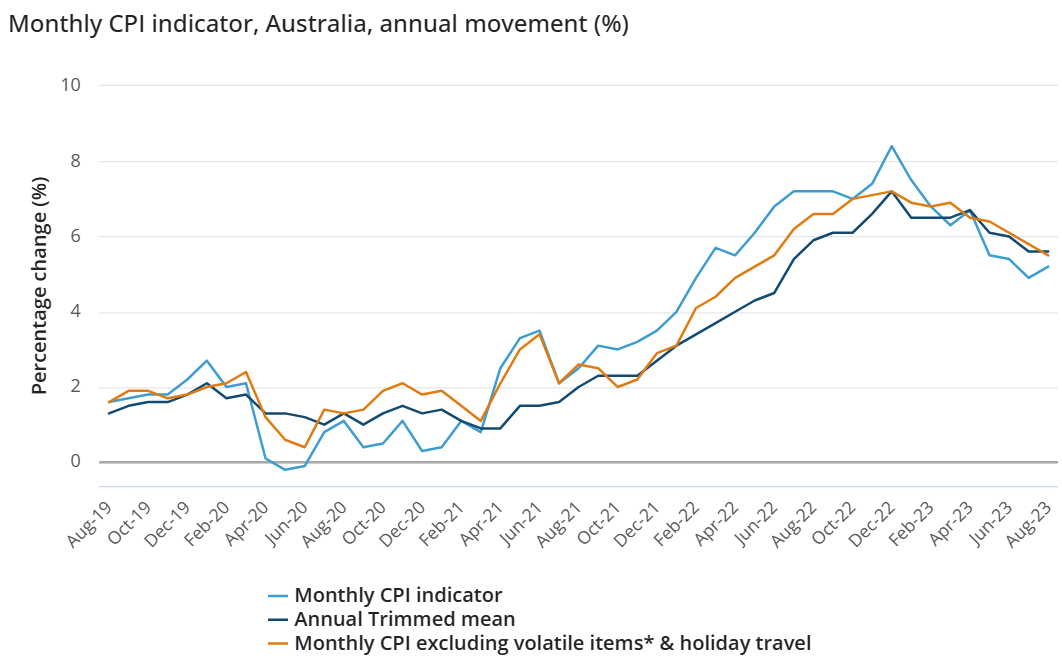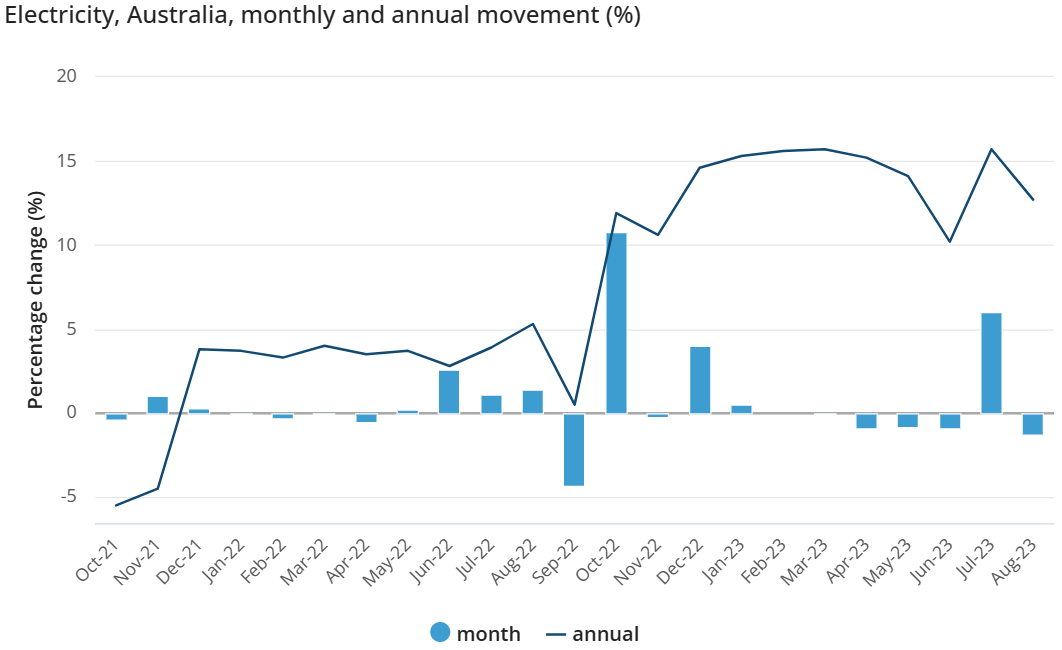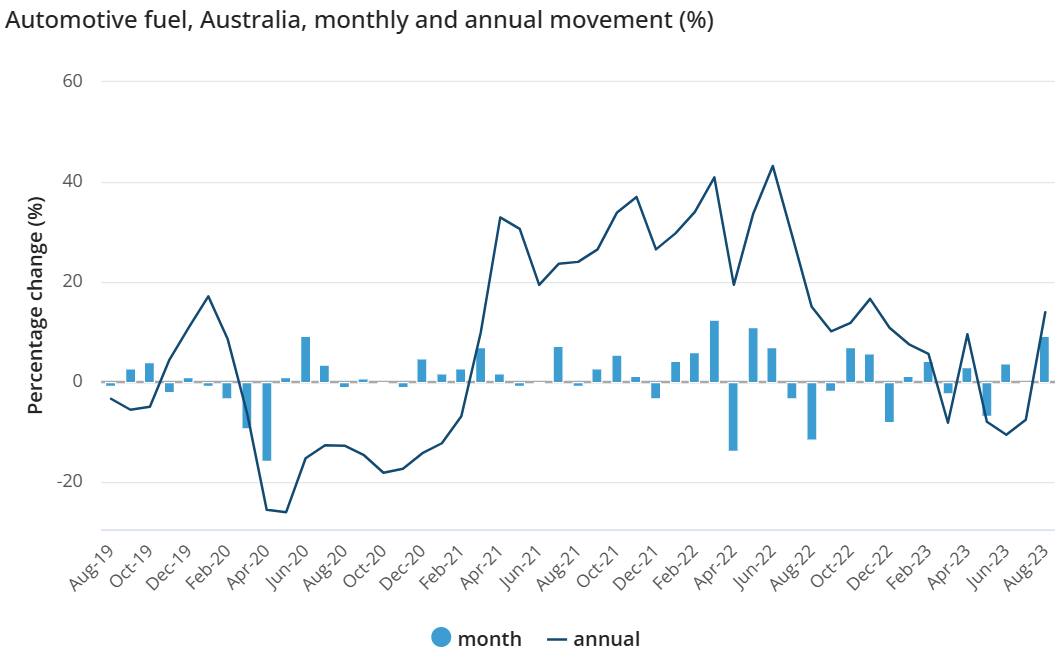As expected, soaring petrol prices helped push the ABS monthly inflation indicator higher to 5.2% year-on-year in August, versus 4.9% in July:

The most significant contributors to the August annual increase were Housing (+6.6%), Transport (+7.4%), Food and non-alcoholic beverages (+4.4%) and Insurance and financial services (+8.8%).
In better news, underlying inflation (excluding volatile items) continued to moderate.
“CPI inflation is often impacted by items with volatile price changes like Automotive fuel, Fruit and vegetables, and Holiday travel. It can be helpful to exclude these items from the headline CPI to provide a view of underlying inflation”, Michelle Marquardt, ABS head of prices statistics, said.
“When excluding these volatile items from the monthly CPI indicator, the annual rise of 5.5% in August is lower than the annual rise of 5.8%”.
The annual growth in Housing was 6.6%, which was lower than the 7.3% increase in July. Building material price hikes continued to decline, suggesting improving supply conditions, as new home prices rose 4.8%, the lowest annual increase since August 2021.
Rent prices increased 7.8% in the year to August, up from 7.6% in July, as the rental market remained tight.

Electricity prices jumped 12.7% and gas prices rose 12.9% in the year to August, mirroring increases in wholesale pricing. Rebates from the Energy Bill Relief Fund, which were implemented in most cities beginning in July, lessened the impact of energy price hikes on qualifying households.

Fuel prices for automobiles increased 13.9% year on year. In August, automotive fuel prices increased 9.1% month on month.
“The annual movement for Automotive fuel remains volatile, partly reflecting price changes from 12 months ago, when Automotive fuel prices fell 11.5% in August 2022”, Marquardt said.

“Price rises this month, combined with base effects, have seen the annual movement for Automotive fuel increase 13.9% in August, compared to a fall of 7.6% in July”.

The RBA should look through the spike in petrol prices, especially given core inflation continues to fall.
That said, there is the risk of second round inflation impacts as higher petrol costs get passed on to higher goods and services prices.

